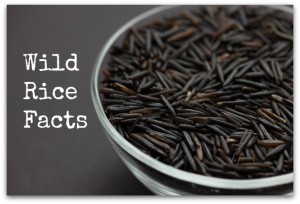How wild are these facts about wild rice? Pretty wild! Okay, they’re not that wild, but they are pretty interesting.
First of all, wild rice isn’t rice…but it is wild. It’s actually an aquatic grass with grains that look, feel like, and taste like rice. Its closest relatives are other cereals, such as corn, wheat, rice, and barley, as well as bamboo.
- Wild rice is also known as “water oats,” “Indian rice,” or “Canada rice.” That’s because it’s the only grain native to North America, primarily in lakes and riverbeds in and around Minnesota and central Canada. Today, however, most commercial varieties are cultivated in manmade rice “paddies” in California.
- The wild rice that was grown and harvested for centuries by native Americans was naturally a brownish-green color. Wild rice producers in the 20th century, however, began to hybridize different wild rice varieties, leading to the commercially dominant style of wild rice on the market today: black-grained.
- Many wild rice producers still use the traditional method of harvesting, which is both a simple, straightforward process…and hard work. Two people travel by a canoe out into the water where the rice is ready to harvest. The “poler” sits in the back of the canoe and uses an oar to push the canoe through the water and plants. The “knocker” stands up in the middle of the boat and uses a stick to bend the 10-foot-tall wild rice stalks over the boat. He uses another long stick to knock grains out of the stalks and into the boat.
- Harvested grains are then taken to shore, where, traditionally, they were heated in an open drum over a fire. That not only imparts a smoky flavor, but dries and preserves the rice. (Today, wild rice grains are industrially par boiled.)








